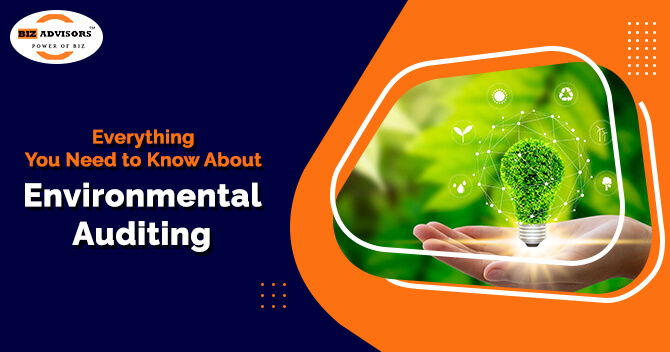Environmental Auditing lays out a structural pattern of assessment of environmental systems by diversified organizations to ensure that the compliance of a corporation certainly lies under the broad theme of environmental norms, principles, statutes, protocols, etc. It plays a crucial role in the systematic operational management of environmental systems on a wide scale and also provides instantaneous support in maintaining the integrity of the environment by eliminating harmful substances from nature.
The Auditing also ensures an efficacious model of new strategic developments concerning environmental well-being and tries to channel policies for reinforcing the stability of environmental diversity on a wide platform. It is unambiguous that Environmental Auditing comprehensively proves to be a pragmatic application in the context of upgrading the environmental standards and verifying the code of conduct of multitudinous social institutions for systemizing the regulation of environmental policies.
The principle of Environmental Auditing can also be understood in the capacity of analyzing the efficiency of environmental management systems and identification of risks inhibited within these models. Determining the costs of natural resources and safeguarding the environment from derogatory practices also fall under the wide ambit of Environmental Auditing. In this article, you will learn about Environmental Auditing in a detailed format.
Aim of Environmental Auditing
Providing protection against environmental harm and lowering human health risk factors are the two main goals of environmental audits conducted by businesses.
Environmental Auditing is a particular kind of risk management tool, with the following main goals:
· Determining the performance analysis of the environmental management systems that are currently in use
· Confirming that the compliance controls are in line with the applicable laws and regulations
· Minimizing the risk that individuals may be exposed to in any environmental, health, or safety measures
Advantages of Environmental Auditing
The several significant benefits of Environmental Auditing are listed below in the following bullet points:
· Environmental protection
· Verification of Consents through State and Federal Laws
· Determining the current and prospective future environmental damage scenarios that will require attention
· Evaluation of training initiatives as well as informational support for staff training
· Presenting companies with potential avenues for constructing a higher environmental performance, identifying the shortcomings, and presenting room for growth
· Identifying and categorizing the potential cost-effective elements that can be attained through waste savings and carbon footprint reduction.
· Assisting in the trade and performing data comparisons with data from other factories or subsidiary businesses.
· Demonstrating to the personnel, stakeholders, communities, and relevant authorities the company’s approach to environmental protection
Procedure Concerning Environmental Auditing
The steps listed below outline the general process for carrying out any form of Environmental Auditing:
· Creating an audit plan that outlines the necessary tasks to be carried out as well as the obligations that must be met for the success of the relevant operations.
· Reviewing the application company’s environmental protection policy as well as the relevant rules that must be upheld by local, state, and federal laws
· Information and all pertinent data gathering
· Assessing the company’s performance overall.
· Determining the areas that demand improvement-focused attention
· Delivering the completed audit report to the competent administration
Phases Concerning Environmental Auditing
The processes of environmental auditing are broken down into the sections listed below:
· Phase of Pre-Audit
· Audit Stage
· After-Audit Phase
The Pre Audit Phase Process
The process for getting ready for the Pre-Auditing Phase is outlined in the steps that are listed below:
· The creation of an auditing team
· Making a plan for an audit[1]
· Examining the subsequent papers:
· Applications for permits and permits that have been issued
· Produced Industry Reports and Production Records
· A report detailing any prior audits that have been undertaken, the corrective measures that have been taken, and the most recent development regarding any problems that have been brought to light during those audits
· The creation of a list of potential inquiries that the auditors might make, as well as follow-ups on earlier audits that were performed
· Making any other papers that the auditors may require
· Correctly submitting the “Disclosure of Violation Table” for every issue found
How the Audit Phase is conducted?
The process for preparing for the Auditing Phase is outlined in the steps that follow below:
· Specify the guidelines
· Identifying the issues and deciding on a solution
· Regular meetings to record the most recent information
· Analyzing the ensuing paperwork –
· Climate Change Policies
· Standards of Compliance
· Instructional Reports
· Storage, Control, and Monitoring Records of the Emergency Response Process’s protocols for Noise, Water, Waste, and Air Pollution
· Addressing worries about the environment
· A determination of whether a document is reliable, accurate, and current
· Inspection of the Site’s grounds
· Checking to see if the Operations are being carried out by the Compliance Measures
· Sample collection, if necessary
· Examining the EHS Staff, Processes, Strategic planning, Upkeep, and Regulations
· Knowing what to look out for
· Organizing a concluding session to analyze and establish the necessary corrective actions, then listing all the issues that were identified.
The Steps Involved in the Post-Audit Phase
The process for getting ready for the Post-Auditing Phase is outlined in the phases that are listed below:
· Environmental Audit Report and Disclosure of Violations Form preparation
· Listing the identified problems and worry-areas
· Employing Taken Measures and Asking Follow-Up Queries about Concerned Topics
Conclusion
The aforementioned text imparts an explicit picturesque of the structural outlook concerning Environmental Auditing. Environmental Auditing helps in comprehending the scope for enhancing the capacity of miscellaneous environmental systems by adopting a holistic approach in the direction of channelizing policies in the context of environmental sustainability. Therefore every social organization must conduct frequent Environmental Audits to ensure that they are complying with the environmental norms, standards, and protocols to contribute to a healthy and fit environment for the future generation. Our legal luminaries at BizAdvisors.io provide a robust support system in the context of assisting individuals in going through the procedural formalities of Environmental Auditing without any difficulty. You can freely contact our legal consultants at BizAdvoisors.io for any kind of assistance or support concerning Environmental Auditing on a wide scale.
Read our article:A Complete Overview of Forensic Audit
 9559179325
9559179325 9559179325
9559179325





